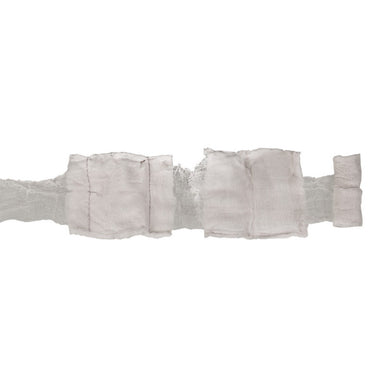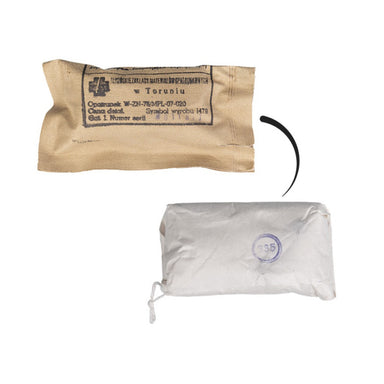
 Sold out
Sold out
17/90 Survival | Lavvu Poncho | Shelter Half
Looking for a Poncho AND a Shelter? Seek no further than this Lavvu Style Poncho Shelter by 17/90 Survival! Modeled after the classic 1-3 hole va...
View full details
Polish military history is rich and complex, marked by periods of independence, foreign occupations, and resilience in the face of adversity. Here's an overview highlighting key aspects of Polish military history:
Piast Dynasty: Poland's early military history centers around the Piast dynasty (10th-14th centuries), which established the Kingdom of Poland and defended against invasions from neighboring tribes and powers.
Battle of Grunwald (1410): A significant victory over the Teutonic Order and its allies, symbolizing Polish-Lithuanian unity and strength.
Jagiellonian Era: The Union of Lublin in 1569 established the Polish-Lithuanian Commonwealth, creating a powerful state in Central and Eastern Europe with a formidable military known for its cavalry, the Winged Hussars.
18th Century: Poland was partitioned and divided among Prussia, Austria, and Russia in the late 18th century, leading to periods of uprisings and resistance against foreign rule.
Kościuszko Uprising (1794): Led by Tadeusz Kościuszko, an unsuccessful revolt against Russian influence in Poland.
Duchy of Warsaw: During the Napoleonic era, Poland briefly regained independence as the Duchy of Warsaw (1807-1815), with Polish troops fighting alongside Napoleon in campaigns across Europe.
November Uprising (1830-1831): An armed rebellion against Russian rule, ultimately suppressed by Russian forces.
World War I: Poland regained independence in 1918 following World War I, with the Polish Armed Forces playing a crucial role in the re-establishment of the state.
Polish-Soviet War (1919-1921): Poland successfully defended its newly established borders against Soviet invasion, securing its independence.
Military Modernization: The interwar period saw significant military reforms and modernization efforts in the Polish Armed Forces.
Invasion and Occupation: Poland was invaded by Nazi Germany and the Soviet Union in 1939, marking the beginning of World War II. Polish forces fought valiantly during the September Campaign and in subsequent resistance efforts.
Exile Forces: Polish forces in exile continued to fight alongside Allied forces in Europe, North Africa, and the Middle East, contributing to Allied victories.
Communist Era: Poland fell under Soviet influence after World War II, with the Polish People's Army aligned with Warsaw Pact forces.
Solidarity Movement: The 1980s saw the emergence of the Solidarity movement, leading to democratic reforms and the eventual collapse of communist rule.
Structure and Operations: The Polish Armed Forces include the Army, Navy, Air Force, and Special Forces. They participate in NATO missions, international peacekeeping, and humanitarian operations.
NATO and EU Membership: Poland joined NATO in 1999 and the European Union in 2004, contributing to collective defense and European security initiatives.
Polish military history reflects a spirit of resilience, national identity, and struggle for independence against foreign domination. The Polish Armed Forces today continue to evolve in response to contemporary security challenges while upholding a legacy of bravery and dedication to national defense and international cooperation.

 Sold out
Sold out
Looking for a Poncho AND a Shelter? Seek no further than this Lavvu Style Poncho Shelter by 17/90 Survival! Modeled after the classic 1-3 hole va...
View full details
 Save Liquid error (snippets/product-badge line 32): Computation results in '-Infinity'%
Save Liquid error (snippets/product-badge line 32): Computation results in '-Infinity'%
Introducing the Polish Military NOS Bandages - a quirky product with a serious punch! These double-ply 5" x 4" cotton bandages, complete with gauze...
View full details Save Liquid error (snippets/product-badge line 32): Computation results in '-Infinity'%
Save Liquid error (snippets/product-badge line 32): Computation results in '-Infinity'%
Looking for a small carry bag? These Polish Gas Mask carriers are small, lightweight, and efficient. In the Puma Patterned Camouflage these things...
View full details
 Save Liquid error (snippets/product-badge line 32): Computation results in '-Infinity'%
Save Liquid error (snippets/product-badge line 32): Computation results in '-Infinity'%
Original Polish Army IOR 7x40 Binoculars 1979Original Polish Army 7×40 IR Binoculars. High-quality binoculars with the designation DF IR B/GA 7X40 ...
View full details
